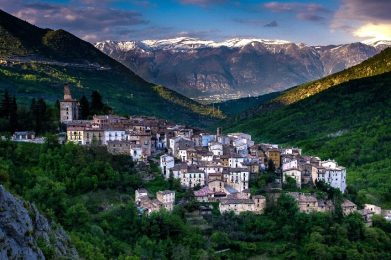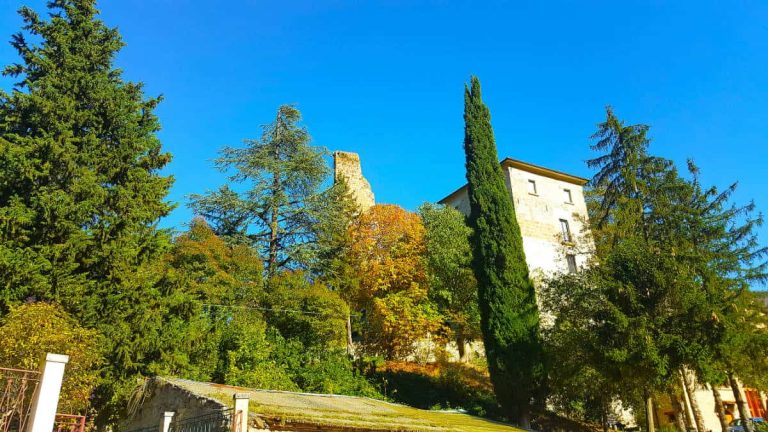The Norman Castle of Sangro is located in the historic center of Anversa degli Abruzzi, overlooking the town. Today the medieval tower is a ruin, while the 18th-century structure is private property, which can be visited by appointment.
Built in the 12th, its function was one of sighting and defense since, in optical alignment with the Orsa Castle (Roccacasale), it controlled one of the southern accesses to the Peligna plain, that from the Sagittario Valley.
Belonging to the Di Sangro family, holders of the county from the mid-12th century until the first half of the 15th, they expanded and fortified it further. During this period it functioned as a feudal curia: the Norman king, or his representative, judged vassals there and dealt with criminal and civil cases. Its location made it easily accessible from both the Peligna basin and the inland highlands dominated by the Di Sangro family. At the end of the 15th century the castle passed to the Belprato counts, new lords of Antwerp. Under them the palace was again renovated and experienced a moment of great cultural splendor, becoming the asylum of men of letters and scientists. It hosted such illustrious figures as Torquato Tasso, the scientist Fabio Colonna and in 1896 even Gabriele D’Annunzio, who was struck by the environmental setting of the Sagittarius gorges surrounding it and set “La fiaccola sotto il moggio” there.
The castle was badly damaged in the 1706 earthquake. The following are still visible: the ruins of the strut tower, of which only two sides remain without openings with traces of corbels on one of the elevations; a low connecting room between the tower and the housing complex, surmounted by the stone coat of arms of the Belprato-Della Tolfa-Orsini family; and finally, the two-level garden with the connecting turret.


